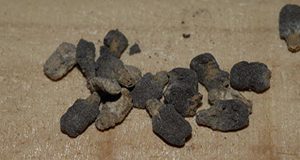A pathogenic fungus called chalkbrood can turn infected larval honey bees into “mummies,” killing them and reducing their colony’s population and productivity. Florida’s subtropical climate may contribute to a greater incidence of the disease, which is common throughout the state. This 2-page fact sheet describing chalkbrood and listing some management strategies to control it was written by Malcolm T. Sanford, Cameron J. Jack, and Jamie Ellis, and published by the UF Department of Entomology and Nematology, December 2016.
http://edis.ifas.ufl.edu/aa138
Tag: Malcolm T. Sanford
Observation Bee Hives
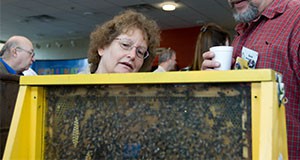
The use of observation bee hives continues to interest a variety of people. This is not surprising. The observation hive is one of the primary research and educational tools in apiculture. It is both educational and entertaining. Observation bee hives can be used to enhance public relations and marketing programs. But a great deal of time and energy is needed to set up a hive and keep it going. Maintenance can be expensive and time consuming, especially if the hive is to be used as a permanent display for the general public. This 3-page fact sheet provides sources for building observation hives and tips for maintenance. Written by David Hall, James D. Ellis, and Malcolm Sanford, and published by the UF Department of Entomology and Nematology, March 2015. (UF/IFAS photo by Tyler Jones)
http://edis.ifas.ufl.edu/mg320
Sample Pollination Agreement
 The key to a prospering pollination service is proper promotion, honest, quality service, and a written contract. This contract would detail the expectations of both the beekeeper and the grower. This 4-page fact sheet provides a suggested pollination agreement. Written by Malcolm T. Sanford, Jeanette Klopchin, and James Ellis, and published by the UF Department of Entomology and Nematology, March 2015. (UF/IFAS Photo: Thomas Wright)
The key to a prospering pollination service is proper promotion, honest, quality service, and a written contract. This contract would detail the expectations of both the beekeeper and the grower. This 4-page fact sheet provides a suggested pollination agreement. Written by Malcolm T. Sanford, Jeanette Klopchin, and James Ellis, and published by the UF Department of Entomology and Nematology, March 2015. (UF/IFAS Photo: Thomas Wright)
http://edis.ifas.ufl.edu/aa169
Minimizing Honey Bee Exposure to Pesticides
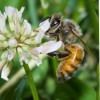 Protecting honey bees and other pollinators from pesticide impacts is important to the sustainability of agriculture. Consequently, pesticide applicators must determine if there is a clear hazard to managed or wild populations of bees. Potential exposure of bees to pesticides can vary greatly depending on the type of pesticide, formulation, application method, label restrictions, and other factors. The goal in using a pesticide is to achieve maximum benefit (success) with minimum negative impact, and these factors should always be considered in pesticide selection. This publication is written (1) to help assure the sustainability of both bees and agriculture by informing beekeepers, pesticide users, and the general public about the often complex relationship between pollinators (specifically bees) and pesticides, (2) to offer guidance for improved communication between beekeepers and pesticide users, (3) to offer pollinator risk-reducing strategies for growers and other applicators when using pesticides, and (4) to provide clarity in laws, labeling, and associated definitions. This 14-page fact sheet was written by J. D. Ellis, J. Klopchin, E. Buss, F. M. Fishel, W. H. Kern, C. Mannion, E. McAvoy, L. S. Osborne, M. Rogers, M. Sanford, H. Smith, P. Stansly, L. Stelinski, and S. Webb, and published by the UF Department of Entomology and Nematology, March 2014.
Protecting honey bees and other pollinators from pesticide impacts is important to the sustainability of agriculture. Consequently, pesticide applicators must determine if there is a clear hazard to managed or wild populations of bees. Potential exposure of bees to pesticides can vary greatly depending on the type of pesticide, formulation, application method, label restrictions, and other factors. The goal in using a pesticide is to achieve maximum benefit (success) with minimum negative impact, and these factors should always be considered in pesticide selection. This publication is written (1) to help assure the sustainability of both bees and agriculture by informing beekeepers, pesticide users, and the general public about the often complex relationship between pollinators (specifically bees) and pesticides, (2) to offer guidance for improved communication between beekeepers and pesticide users, (3) to offer pollinator risk-reducing strategies for growers and other applicators when using pesticides, and (4) to provide clarity in laws, labeling, and associated definitions. This 14-page fact sheet was written by J. D. Ellis, J. Klopchin, E. Buss, F. M. Fishel, W. H. Kern, C. Mannion, E. McAvoy, L. S. Osborne, M. Rogers, M. Sanford, H. Smith, P. Stansly, L. Stelinski, and S. Webb, and published by the UF Department of Entomology and Nematology, March 2014.
http://edis.ifas.ufl.edu/in1027
Infant Botulism and Honey (ENY128/AA142)
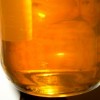 Since honey is a potential and avoidable source of Clostridium botulinum spores, the Center for Disease Control and Prevention, the American Academy of Pediatricsm and the National Honey Board recommend that honey not be given to infants younger than 12 months of age. Honey should not be added to water, food, or formula fed to infants under 12 months of age. This 2-page fact sheet was written by Malcolm T. Sanford, Eddie Atkinson, Jeanette Klopchin, and Jamie Ellis, and published by the UF Department of Entomology and Nematology, June 2013.
Since honey is a potential and avoidable source of Clostridium botulinum spores, the Center for Disease Control and Prevention, the American Academy of Pediatricsm and the National Honey Board recommend that honey not be given to infants younger than 12 months of age. Honey should not be added to water, food, or formula fed to infants under 12 months of age. This 2-page fact sheet was written by Malcolm T. Sanford, Eddie Atkinson, Jeanette Klopchin, and Jamie Ellis, and published by the UF Department of Entomology and Nematology, June 2013.
http://edis.ifas.ufl.edu/aa142
Florida Bears and Beekeeping (ENY105/AA133)
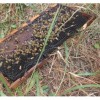 The Florida black bear (Ursus americanus floridanus) is a minor predator of beehives in Florida with the potential to cause major destruction. Large-scale urban and agricultural development inexorably reduces prime bear habitat each year. This habitat also contains excellent bee forage, and so bears and bees will sometimes come in contact, thus resulting in bear predation. This 4-page fact sheet was written by Malcolm T. Sanford and James D. Ellis, and published by the UF Department of Entomology and Nematology, August 2012.
The Florida black bear (Ursus americanus floridanus) is a minor predator of beehives in Florida with the potential to cause major destruction. Large-scale urban and agricultural development inexorably reduces prime bear habitat each year. This habitat also contains excellent bee forage, and so bears and bees will sometimes come in contact, thus resulting in bear predation. This 4-page fact sheet was written by Malcolm T. Sanford and James D. Ellis, and published by the UF Department of Entomology and Nematology, August 2012.
http://edis.ifas.ufl.edu/aa133
ENY128/AA142 Infant Botulism and Honey
Revised! ENY128, a 2-page fact sheet by Malcolm T. Sanford, Eddie Atkinson and Jamie Ellis, prepares beekeepers to answer questions responsibly about honey as a potential source of C. botulinum spores, which can cause botulism in infants under 12 months of age. Includes references. Published by the UF Department of Entomology and Nematology, October 2009.
http://edis.ifas.ufl.edu/AA142
